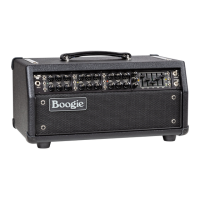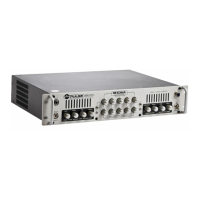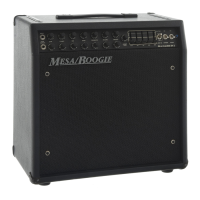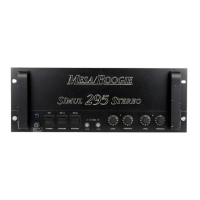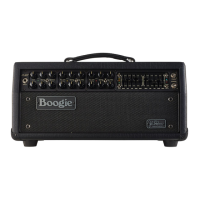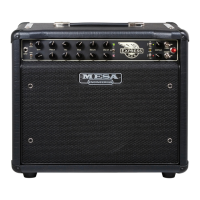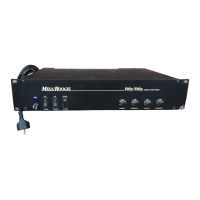FAT works great for chording and rhythmic work, but in contrast to the CLEAN Mode, FAT sings with a huge, lush voice that fills-in a
mix and casts a halo of harmonic richness around the entire instrument. The sonic footprint is much wider than CLEAN and can carry
a part such that it becomes the backbone of a song without any processing.
The gain structure of FAT is tapered so that it’s more suited to threshold and clipped sounds with more gain lower, and presenting
sooner on the GAIN Control. As FAT is pushed toward clip, the bigger cathode values in the preamp deliver a smooth, rich break up
that is usually preferable for both smeared chording and bluesy single note solo work. This extra gain down lower fills-in all the jagged
edges in chords and lends girth to the single notes. These qualities cause many players to choose FAT as their go-to Mode for mildly
overdriven sounds that are more “purring” and less pointed and jabbing. FAT is really useful in the studio for both clean and slightly
driven parts as well, where you want to have a big sound and yet retain all your dynamic nuances. This is especially true in the 25
and 35 Watt settings of the Power Select switch, where the power section can deliver dynamic differences more effortlessly due to
increased headroom.
One important thing to keep in mind is that the lower centering of bass frequencies makes it possible to overload both the preamp and
speakers quite easily by setting the BASS and MID Controls in their higher regions (above 11:00). The power section isn’t immune
either as the extra lows will use up power quickly (it takes more wattage to amplify low frequencies) and along with premature clip,
you will create a tubby, indistinct sound that is not very pleasing. Follow the simple rule we suggested earlier in the HELPFUL HINTS
Section of this Operating Guide; As the GAIN control goes up—the BASS (and MID in this case) should come down. This will help
you avoid overloading your entire rig with lows and avoid tubbing-out your sound.
NOTE: Lower frequencies produced in the FAT mode can create a bottom heavy, flubby sound that can overwhelm your speakers and
eat up headroom if the BASS(and MID) control is set too high, especially in combination with high GAIN settings. It is normal—and in
fact suggested—to run lower BASS (and even MID) settings (10:00- 7:30/OFF) in the FAT Mode as the GAIN is increased.
CRUNCH
This mode is taken directly from the MARK FIVE™ and here it represents the perfect “crossover Mode”. It’s got girth
and is balanced frequency-wise and CRUNCH provides a sound that still has urgency and dynamics, yet is warm, rich and is adept
at covering the valuable ground from the onset of clip up through grinding Heavy Rhythm. This makes CRUNCH one of the most
versatile Modes in the entire amp and despite its name, this sound works equally well for clean chording, Crunch Rhythm and single
note Lead work.
You will find that the TREBLE control can be used in the higher range without becoming too bright in CRUNCH. This region will add
more gain in the top end, but you can blend it nicely by reducing the PRESENCE Control if it gets too bright. Conversely, the BASS
can be reduced in CRUNCH to get some increased tightness and yet the overall character remains warm with plenty of low end
inherent in the basic character.
CRUNCH also works beautifully in tandem with the Channel POWER SELECT switch when the GAIN Control is applied with com-
mon sense. Again, let the EL84s add some gain in the power section and reduce the GAIN Control in the preamp to unveil sounds
that have both thickness from the preamp and attitude from the power section. Some amazing sounds arise out of the 10 watt Power
Mode when CRUNCH is used this way. This applies to both chording and single note sounds.
PAGE 13
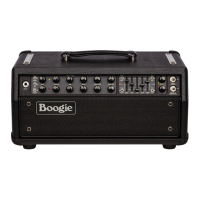
